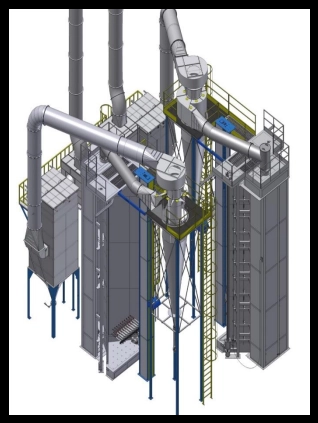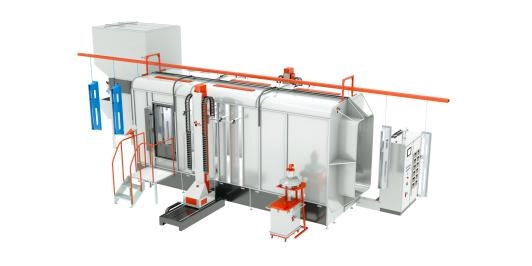Content Menu
● Understanding Manual and Automated Data Management
>> What Is Manual Data Management?
>> What Is Automated Data Management?
● Key Differences Between Manual and Automated Systems
>> Accuracy and Error Rates
>> Speed and Efficiency
>> Cost Implications
>> Scalability and Flexibility
>> Compliance and Integration
● When to Choose Manual Data Management
>> Small Data Sets and Budget Constraints
>> Complex or Non-Standard Data
>> High Accuracy with Human Oversight
>> Privacy and Regulatory Compliance
● When to Choose Automated Data Management
>> Large Volumes and Real-Time Processing
>> Routine and Repetitive Tasks
>> Cost Efficiency at Scale
>> Data Integration and Consistency
>> Compliance and Audit Readiness
● Hybrid Approaches: Combining Manual and Automated Systems
● Critical Factors to Consider When Choosing
>> Volume and Velocity of Data
>> Nature of Data and Errors
>> Budget and Expertise
>> Risk Tolerance and Compliance Needs
>> Long-Term Maintenance
● Conclusion
● Frequently Asked Questions
Data management is a cornerstone of modern business operations. As organizations generate and process increasing volumes of data, the choice between manual and automated data management systems becomes critical. Each approach offers distinct advantages and challenges, and selecting the right system depends on various factors including data volume, accuracy requirements, cost, and scalability. This article explores the key considerations involved in choosing between manual and automated data management systems, providing a comprehensive guide for decision-makers.

Understanding Manual and Automated Data Management
What Is Manual Data Management?
Manual data management involves human operators entering, verifying, and maintaining data using traditional tools such as spreadsheets, paper forms, or basic database interfaces. This method relies heavily on human judgment and intervention, which can be advantageous for handling complex or nuanced data that requires interpretation.
What Is Automated Data Management?
Automated data management uses software and technology to capture, process, and maintain data with minimal human involvement. It employs algorithms, machine learning, and rule-based engines to ensure data accuracy, speed, and consistency, often integrating seamlessly with other digital systems.
Key Differences Between Manual and Automated Systems
Accuracy and Error Rates
Manual data entry is prone to human error due to fatigue, distraction, or misunderstanding, leading to higher error rates. Automated systems significantly reduce these errors by using predefined rules and validation algorithms, although they are not entirely error-free and require proper configuration and maintenance.
Speed and Efficiency
Automated data management excels in processing large volumes of data rapidly, enabling real-time updates and faster decision-making. Manual methods are slower and labor-intensive, suitable only for smaller datasets or when human oversight is necessary.
Cost Implications
Manual data management incurs ongoing labor costs, including wages and quality control efforts. Automated systems demand a higher upfront investment in software, hardware, and training but typically offer lower operational costs over time due to increased productivity and reduced errors.
Scalability and Flexibility
Automated systems scale effortlessly with growing data volumes and evolving business needs. Manual systems struggle to keep pace as data complexity and volume increase, often requiring proportional increases in human resources.
Compliance and Integration
Automated solutions often come with built-in compliance features and audit trails, facilitating adherence to industry regulations. They also integrate well with existing digital workflows. Manual methods may be preferred when strict, personalized handling of sensitive data is required due to privacy or regulatory reasons.
When to Choose Manual Data Management
Small Data Sets and Budget Constraints
For organizations dealing with limited data volumes or operating under tight budgets, manual data management can be more practical and cost-effective. The initial investment for automation may not justify the benefits in such cases.
Complex or Non-Standard Data
Manual entry is advantageous when data requires human judgment, interpretation, or handling of unstructured formats that automated systems cannot easily process.
High Accuracy with Human Oversight
Situations demanding meticulous verification and quality control benefit from manual methods, where human operators can catch subtle errors or inconsistencies that machines might miss.
Privacy and Regulatory Compliance
Certain industries or scenarios require personalized data handling to comply with stringent privacy laws or regulations, making manual management preferable.
When to Choose Automated Data Management
Large Volumes and Real-Time Processing
Businesses processing vast amounts of data or requiring immediate data availability benefit greatly from automation, which offers speed and consistency that manual methods cannot match.
Routine and Repetitive Tasks
Automated systems reduce the burden of repetitive data entry, freeing human resources for higher-value activities and minimizing human error.
Cost Efficiency at Scale
While automation involves upfront costs, the reduction in per-unit data processing expenses and labor costs makes it cost-effective for large-scale operations.
Data Integration and Consistency
Automation facilitates seamless merging of data from multiple sources, ensuring uniformity and supporting comprehensive data management strategies.
Compliance and Audit Readiness
Automated systems provide reliable audit trails and compliance monitoring, which are essential for regulated industries.
Hybrid Approaches: Combining Manual and Automated Systems
In many cases, a hybrid approach that leverages automated data processing for bulk tasks combined with manual review for critical or complex data can optimize both efficiency and accuracy. For example, automated pre-cleansing of data followed by human audit ensures speed without compromising quality.
Critical Factors to Consider When Choosing
Volume and Velocity of Data
High data throughput favors automation, while smaller, static datasets may be manageable manually.
Nature of Data and Errors
Structured, predictable data suits automation; unstructured or context-sensitive data may require manual handling.
Budget and Expertise
Organizations must balance initial investments against ongoing costs and consider available technical expertise.
Risk Tolerance and Compliance Needs
Mission-critical applications may demand hybrid or manual oversight to mitigate risks.
Long-Term Maintenance
Automation reduces labor costs but requires technical upkeep, including software updates and model retraining.
Conclusion
Choosing between manual and automated data management systems involves a nuanced evaluation of organizational needs, data characteristics, budget, and compliance requirements. While automation offers superior speed, scalability, and cost-effectiveness for large data volumes, manual methods retain value in scenarios demanding human judgment, complex data interpretation, or strict regulatory adherence. A hybrid strategy often provides the best balance, combining the strengths of both approaches to optimize data quality and operational efficiency.
Frequently Asked Questions
1. When is manual data management preferable over automation?
Manual management is preferable for small datasets, complex or unstructured data requiring human judgment, strict privacy compliance, or when budget constraints prevent automation investment.
2. What are the main advantages of automated data management?
Automation offers faster processing speeds, higher accuracy, scalability, cost efficiency at scale, and better integration with digital workflows.
3. Can automated systems completely eliminate data errors?
No system is entirely error-free; automated systems reduce human errors but require proper configuration and maintenance to minimize mistakes.
4. How does data volume affect the choice between manual and automated systems?
Large volumes of data favor automation due to speed and efficiency, while small volumes may be efficiently handled manually.
5. Is a hybrid approach beneficial?
Yes, combining automation for bulk processing with manual review for critical data can optimize both accuracy and efficiency.

[1] https://disk.com/resources/manual-vs-automated-data-entry/
[2] https://www.scribd.com/document/628475971/%E5%89%91%E6%A1%A5%E9%9B%85%E6%80%9D%E8%80%83%E8%AF%95%E5%85%A8%E7%9C%9F%E8%AF%95%E9%A2%98%E9%9B%866%E7%B2%BE%E8%AE%B2
[3] https://vocal.media/journal/automated-vs-manual-data-cleansing-which-is-right-for-you
[4] http://www.cupl.cc/kyyyzhenti.html
[5] https://www.docuclipper.com/blog/manual-data-entry-vs-automated-data-entry/
[6] https://ia800600.us.archive.org/5/items/ittushu-2470/%E6%B8%85%E5%8D%8E%E5%A4%A7%E5%AD%A6%E5%9B%BE%E4%B9%A6%E9%A6%86-%E6%88%98%E7%96%AB%E7%89%88/H_%E8%AF%AD%E8%A8%80%E3%80%81%E6%96%87%E5%AD%97/12133_%E5%9B%BD%E9%99%85%E4%BA%A4%E6%B5%81%E8%8B%B1%E8%AF%AD%E9%98%85%E8%AF%BB%E8%BF%9B%E9%98%B6%E6%95%99%E7%A8%8B_text.pdf
[7] https://www.sapien.io/blog/manual-vs-automated-data-collection-which-method-wins
[8] https://www.scribd.com/document/10317685/%E5%A4%A7%E5%AD%A6%E7%A7%91%E6%8A%80%E8%8B%B1%E8%AF%AD
[9] https://mammoth.io/blog/manual-vs-automated-data-workflows/
[10] https://www.cs.cmu.edu/afs/cs.cmu.edu/project/cmt-40/Nice/Transfer/Chinese/xferlexicon.txt
Hot Tags: China, Global, OEM, private label, manufacturers, factory, suppliers, manufacturing company










































 .
. 